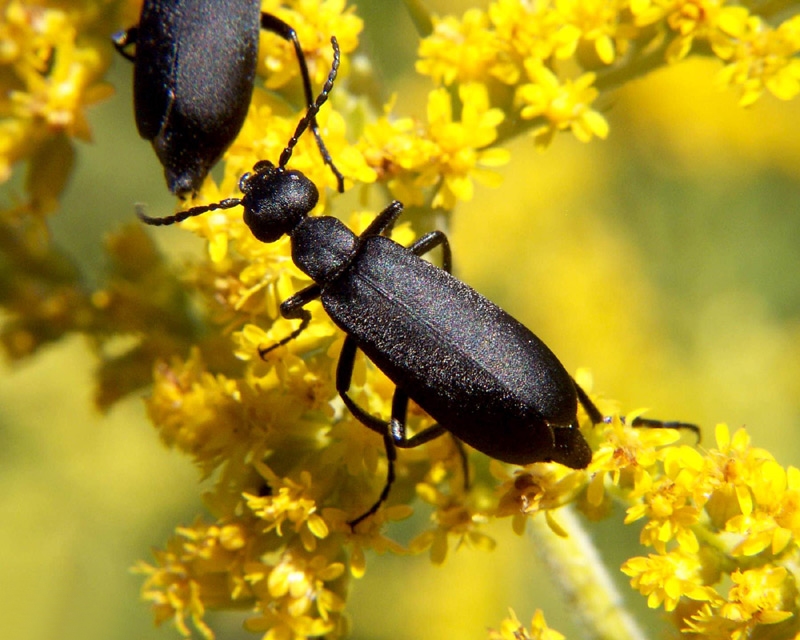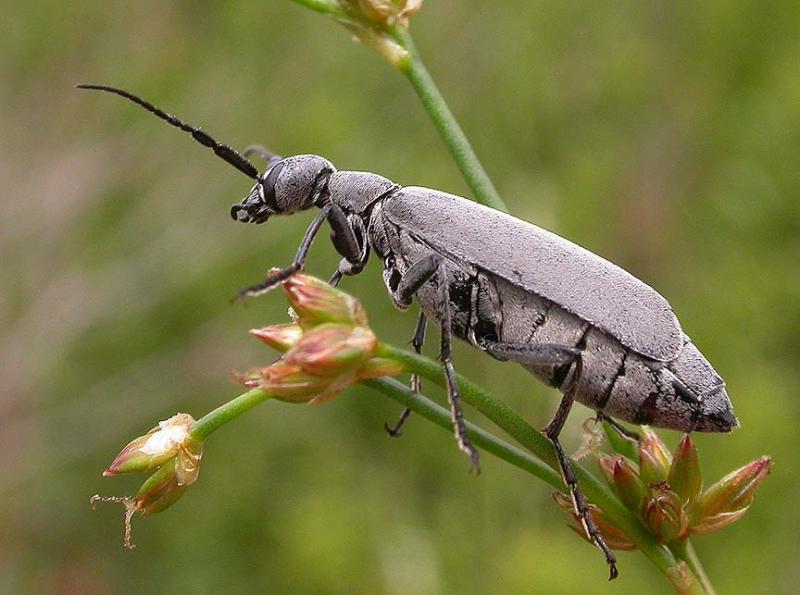



PLANTS ATTACKED: Alfalfa, peas, soybeans, clovers, occasionallya few other field crops, and weeds.
DESCRIPTION: Several species of blister beetles are of economic importance. They range from 1/2 to 1 1/4 inches in length. Their bodies are cylindrical and relatively soft. Color and markings of the adult vary from gray, black or brown to striped or spotted forms with a combination of colors. The antennae are conspicuous, and the head is noticeably larger than the thorax. These insects are called "blister beetles" because their bodies contain a substance, cantharidin, a vesicant. Most ofthe larval stages are grub-like and have three pairs of legs.
LIFE HISTORY: The blister beetle passes the winter as a larva in the soil. After pupation it emerges as an adult during the late spring or summer. The female lays masses of 50 to 300 eggs in cavities prepared in the soil. The eggs hatch into very active larvae, in which stage some species remain in the soil for 1 to 2 years. Normally, there is only one generation per year.
DAMAGE: Adults frequently may be found in clusters on the tips of alfalfa and other host plants. They eat the flowers and foliage which results in ragged, stunted plants. The beetles may suddenly appear in mass in fields, having migrated like armyworms. The larvae of the common blister beetles feed upon and destroy many grasshopper egg pods.